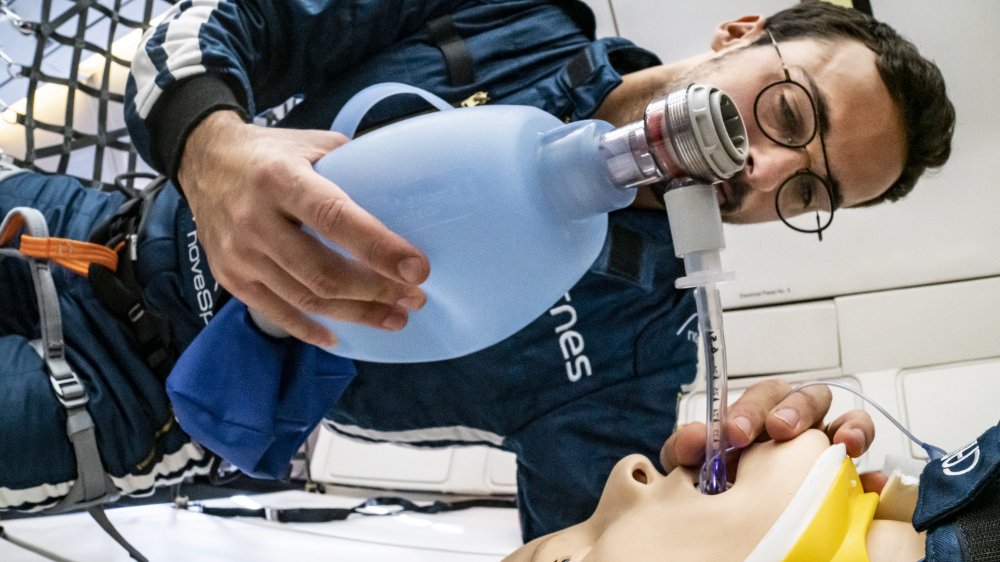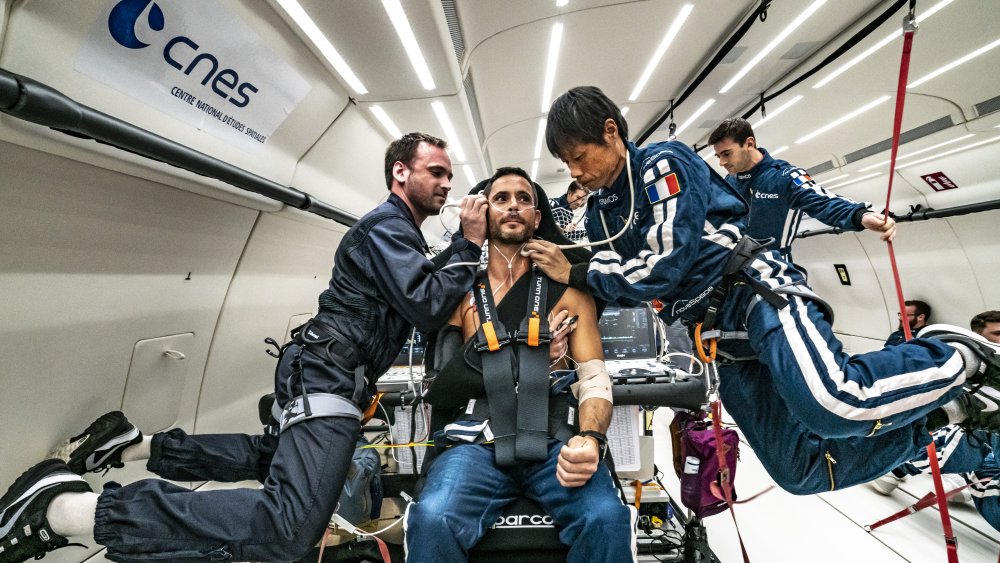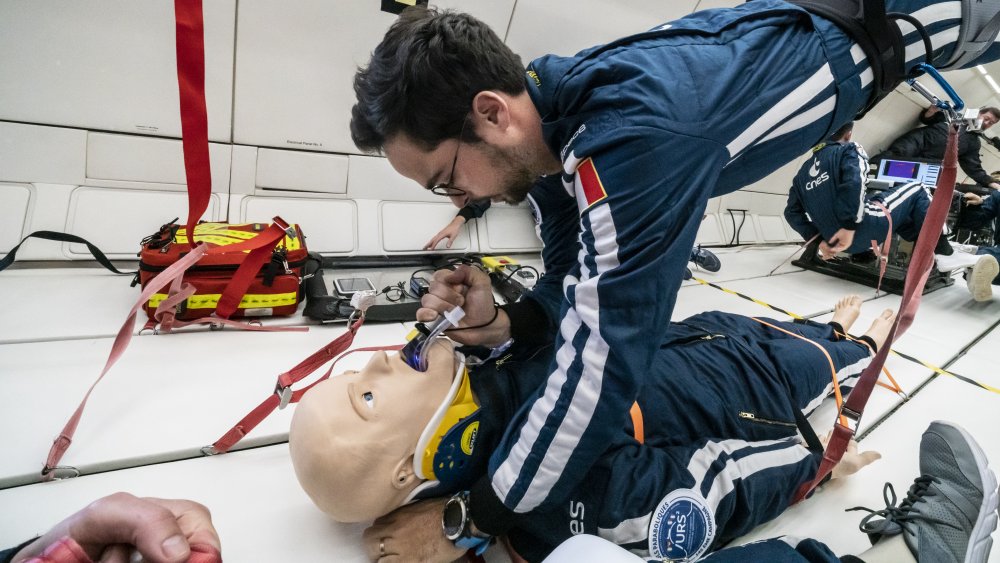How Would Doctors Perform Surgery In Space?
Mars is 54.6 million kilometres (33.9 million miles) away from Earth. According to the specially-built website DistanceToMars.com — highly recommended! — it would take at least 150 days to get to Mars with current astronautical equipment. If you needed to call Earth via radio signal, it would take approximately 21 minutes to travel, though in best case scenarios, according to PhysLink.com, this lag would only last for just over four minutes.
So, with all that in mind, imagine developing a blood clot, as one astronaut on the International Space Station did last year. Fortunately, as CNN reported in January, NASA managed to reach a blood clot specialist who could call the astronaut from Earth. But, again, consider the scenario for a person on Mars, and the fact that it appears that this astronaut didn't have a family history of blood clots, which implies travelling in space may have been a deciding factor in the clot's development. With space travel, the severity of such medical issues becomes apparent: after all, in such emergencies, you cannot rely on phoning a terrestrial expert.
Instead, experts need to develop techniques to treat patients in the extreme hostile conditions that would come with interplanetary exploration.
Floating in a tin can
In preparation for the possibility of medical emergencies in deep space, scientists for the European Space Agency have been experimenting with what medical procedures can be carried out in zero gravity by simulating weightlessness in parabolic flights. Back in 2006, CBS ran a piece on how a French team performed a mid-air cyst removal from a man's arm — that is to say, an actual living human. The first ever zero gravity surgery only took about ten minutes, when they added all the diving intervals together. For Dominique Martin, the chief surgeon, this is an added distinction, as he is also the first to perform microsurgery on a rat's tail in 2003.
So, with a specifically trained medical team on board, medical procedures are feasible. However, as Nina Louise Purvis, a Postgraduate Researcher in Space Medicine and Medical Student, King's College London, points out in a piece on The Conversation, surgeons experimenting in zero gravity also have to deal with intestines and surgical tools floating around the operating space. To overcome this, surgical tools have been magnetized, and the patient has been restrained, according to the BJS Society.
Another problem that Purvis brings up? The air in a spaceship circulates within a constrained area, raising the possibility of an infection. NASA's attempt to circumnavigate this issue is to install a hermetically sealed enclosure over the patient.
Printed instruments
The basis for medical practices in space have been established, but then there's the need for equipment. Spaceships offer much more limited cargo capacity than the average clinic, let alone hospital. So, in situations where the chief medical officer needs a very specific instrument that wasn't brought due to the astronomically low likelihood of needing it, there needs to be a way to acquire it.
The best bet, for the lacking Martian settler, may be 3D printers. In April, students from the Munich University of Applied Science successfully applied to the European Space Agency's "Fly Your Thesis 2020" program with a project designed to prove the concept of creating various structures in space. Other experiments, like a 2016 evaluation of 3D surgical implements, found that people with no prior surgical experience could print tools that would serve as substitutes for purpose-made surgical equipment.
Even more in the realm of science fiction, then, is the printing of biomaterials in space. In May, Medical Plastics News announced that while heart tissues on Earth tended to collapse due to gravity, ones printed in space retained their structure. The study of interplanetary medicine, then, opens not just the medical feasibility of travelling to distant planets, but also opens up new avenues for healthcare here on Earth.


